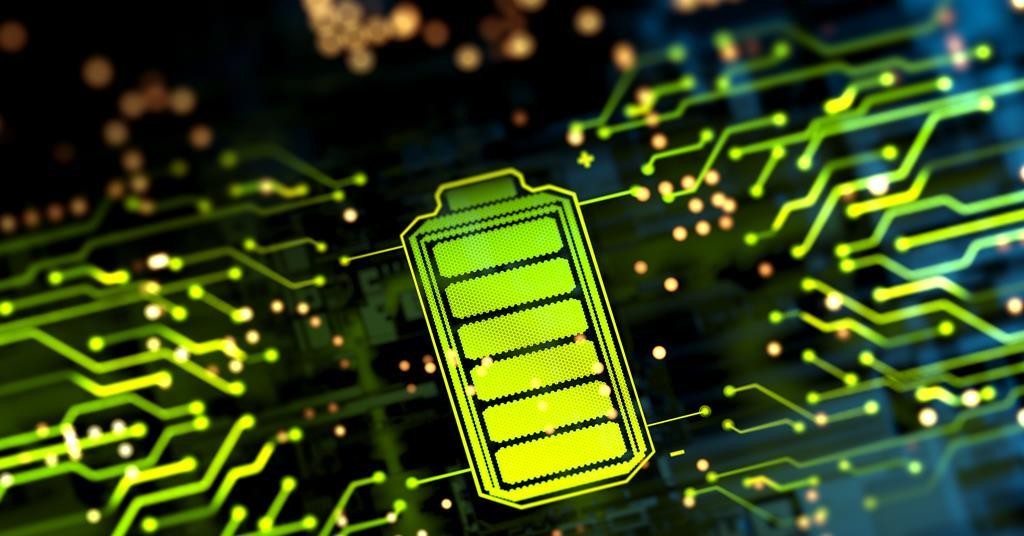In a world where our daily lives are intertwined with the power of batteries, from our smartphones to electric vehicles and renewable energy storage, envision a future where these essential energy sources become more efficient, powerful, and cost-effective. Now, imagine this future is not a distant dream but a reality being shaped by groundbreaking research.
Introduction
The world is on the cusp of a battery revolution. As we strive for a more sustainable future, the demand for advanced batteries has never been higher. In this article, we take you on a journey through the cutting-edge research conducted by the Empa research group, led by Maksym Kovalenko, which holds the promise of transforming the batteries we rely on daily.
From the phones in our pockets to the electric vehicles we drive, and even the storage of renewable energy that powers our homes, batteries are the unsung heroes of modern life. With the global shift towards sustainable energy sources, the need for batteries that are not only efficient but also economically viable has never been more critical. The research we explore is not just a scientific endeavor; it’s a potential game-changer with implications for all of us.
What will we see and learn here?
In this article, we will delve into the innovative work of the Empa research group, focusing on the outcomes that may redefine the batteries of the future. Our journey will cover the essential elements of an ideal battery, the challenges faced by the electric vehicle industry, and a groundbreaking solution in the form of solid-state batteries.
We will also explore the cost-effective revolution in stationary energy storage, made possible by indigenous material choices. Ultimately, we will discuss how these breakthroughs might shape a brighter and more affordable future for batteries, accelerating the transition to renewable energy sources and making electric vehicles more accessible to all.
Our exploration will begin with a fundamental question: what makes a good battery? The answer is multifaceted, and we’ll discover how the ideal battery varies based on its intended use, whether it’s for electric vehicles demanding high energy density and rapid charging or stationary storage systems where cost-effectiveness is paramount.
We’ll then dive into the very building blocks of batteries, understanding the components that make them tick: the cathode, anode, and electrolyte.
The electrifying world of electric vehicles introduces a unique challenge known as dendrites. We’ll explore how solid-state batteries might hold the key to overcoming this hurdle while still achieving lightning-fast charging.
A breakthrough in solid electrolytes brings us to the forefront of battery technology, as we delve into the development of lithium lanthanum zirconium oxide (LLZO) and the innovation of bilayer LLZO membranes.
Lastly, we’ll journey into the realm of stationary energy storage, where the cost is king. Discover how researchers have harnessed the power of an everyday element, iron, to make affordable batteries a reality.
As we conclude, we’ll paint a picture of a future where batteries are brighter and more affordable, and where the dream of a sustainable and accessible energy landscape becomes a tangible reality. Join us on this electrifying voyage into the future of batteries.

The Quest for the Ideal Battery
The article delves into the critical question of what makes a good battery. Is it all about capacity, charging speed, or price? The answer is not one-size-fits-all. The ideal battery depends on its intended application. For example, batteries for electric cars require high energy density, fast charging, and lightweight designs. In contrast, stationary storage batteries used for renewable energy must be as cost-effective as possible.
The Building Blocks of a Battery
Every battery, regardless of its purpose, comprises three essential components: a cathode, an anode, and an electrolyte. In conventional lithium-ion batteries, the anode consists of graphite, while the cathode is typically a mixed oxide of lithium and other metals. The electrolyte serves as a mediator for lithium ions during the charging and discharging processes.
Electromobility and Dendrite Challenge
For electric vehicles, the need for high energy density led to an intriguing idea – replacing the traditional graphite anode with metallic lithium. This switch could store significantly more energy in the same-sized battery. However, a problem arises: the uneven stripping and deposition of lithium during charge and discharge can create dendrites, branched structures of metallic lithium that can lead to short circuits.
One solution to this issue is the use of solid-state batteries. In these batteries, a solid material takes the place of the liquid electrolyte. However, achieving rapid charging within ten to fifteen minutes, as many desire, presents another challenge. High current densities required for quick charging can still lead to dendrite formation, reducing battery life.
A Breakthrough in Solid Electrolytes
The Empa researchers, as part of the Fraunhofer ICON program, have made significant progress in developing a solid electrolyte called lithium lanthanum zirconium oxide (LLZO). This material boasts high ionic conductivity and chemical stability, making it an ideal candidate for batteries. They’ve taken a unique approach by creating a bilayer LLZO membrane with a dense and a porous layer. This design maximizes the contact area between lithium and the electrolyte while preventing dendrite growth. Importantly, they’ve developed a cost-effective production process for these bilayer membranes, which could potentially make future batteries both powerful and affordable.
A Cost-Effective Revolution for Stationary Storage
When it comes to stationary storage of renewable energy, cost is the primary concern. Currently, lithium-ion batteries for stationary storage are expensive, leading many to rely on pump storage hydropower despite its low energy density.
Researchers have made a fascinating discovery – they’ve replaced costly materials like cobalt and nickel in the cathode with the abundant and inexpensive element: iron. By combining iron with fluoride, specifically iron(III) hydroxyfluoride, they’ve unlocked a unique crystalline structure called pyrochlore, which contains channels conducting lithium ions. This development allows for a battery with comparable performance at a significantly lower cost.
The researcher, Kostiantyn Kravchyk, expresses his surprise that the low-cost synthesis of such a promising material hasn’t been explored more extensively until now.
The Future of Batteries: Bright and Affordable
The outcomes of the Empa research group’s work are promising. From enhanced solid electrolytes that could revolutionize fast-charging electric vehicles to cost-effective solutions for stationary storage, the future of batteries looks bright and affordable. These innovations could accelerate the transition to renewable energy sources and make electric vehicles even more accessible to the masses.
In a world where sustainability is paramount, these breakthroughs offer a glimmer of hope, suggesting that the battery of the future might not be an elusive dream but a tangible reality that could change the way we power our world.
Conclusion
As we wrap up our journey through the world of batteries and the innovative research conducted by the Empa research group, it’s evident that the future of energy storage is not just bright but also within our reach. We’ve explored the crucial elements that define an ideal battery, learned about the challenges faced by the electric vehicle industry, and witnessed a groundbreaking solution in the form of solid-state batteries.
We’ve seen how the Empa researchers have made significant progress in developing solid electrolytes, like lithium lanthanum zirconium oxide (LLZO), which hold the potential to revolutionize fast-charging electric vehicles. These innovations could make high-energy-density, rapid-charging batteries not just a dream but a reality, helping to accelerate the transition to sustainable energy sources and making electric vehicles more accessible to everyone.
In the realm of stationary energy storage, where cost-efficiency is paramount, the researchers have found a cost-effective solution. By replacing expensive materials with abundant iron, they’ve created batteries that can compete with costly alternatives. This achievement brings us one step closer to a sustainable and accessible energy landscape.
Call to Action
So, what can you do with this knowledge? Stay informed and support research and innovations in the field of battery technology. Keep an eye on developments from research groups like Empa and be a part of the transition towards sustainable energy. Consider using electric vehicles or supporting renewable energy projects in your community.
Most importantly, spread the word about these breakthroughs. Share this article and the exciting prospects it reveals for the future of batteries. With your support and awareness, we can help shape a world where sustainable and affordable energy solutions are not a distant dream but a tangible reality. Join us in this electrifying voyage into the future of batteries, and let’s power a brighter and greener world together.
Reference
https://cleantechnica.com/2023/11/07/what-is-the-battery-of-the-future-made-of/



